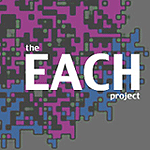

| Home | Activities | Papers | Models | Researchers |
 |  | ||||
|
|
Activities
|
|
The Learning Environment The EACH project emerged out of the larger scale MSCP project (located at Tufts Universityıs Center for Connected Learning and Computer-Based Modeling (CCL). As part of the MSCP project, we study students at many different grade levels as they explore and create models of complex phenomena in the language StarLogoT. Students (from middle school to graduate school) come to the CCL and meet informally with project staff who mentor them in learning StarLogoT. Students explore models from the project library according to their interests. They are encouraged to vary and extend the underlying StarLogoT code for the project sample models and, when they feel ready, to create new models from "scratch". The topic of evolution, in general, is one that has appeals to many of the student modelers. For the high school students and many of the undergraduates as well, evolution was studied largely in "story" form. That is, they learned stories of how the theory of evolution came into being, how it was resisted and how it is supposed to work. Many of the students find these stories intriguing but unsatisfying. The dissatisfaction consisted of feeling that they did not have an adequate methodology for testing the plausibility of particular evolutionary arguments or for evaluating competing evolutionary claims, Connected Learning The EACH project is situated in a Connected Learning (1993; 1999) Framework . Connected Learning arises out of a constructionist (Papert 1980; 1991) paradigm that suggests that powerful learning arises from learnersı construction of artifacts and external representations. Connected Learning suggests that a particularly valuable feature of learner constructions is the richness of the web of connections (Wilensky, 1991; 1993) constructed. The Connected Learning Framework was first instantiated in the Connected Mathematics (Wilensky, 1993), Connected Probability (Wilensky, 1995) and ConnectedScience (Wilensky & Reisman, 1999) projects. In the EACH project, we use a developmental sequence of activities and constructions that has been used successively in these projects. Students advance their participation in the EACH project through several stages. In the first stage, they view a projected StarLogoT model of evolutionary strategies and engage in discussion of the outputs of the model. In the second stage, they explore the model on their own, varying parameters of the model and recording the outputs. In the third stage, they open up the glass box of the model code and make a revision to the underlying premises of the model. In the final stage, they create their own conceptual models and code them from "scratch" in StarLogoT. The StarLogoT modeling language affords a natural diving in (Resnick & Wilensky, 1998; Wilensky, 1997a) to the complexity of the phenomena through identification with the individual elements ("agents") of the model. The sequence of stages scaffolds a contextualized model-based inquiry -- students pose questions arising from their interactions with models and then mutually refine the questions and models
|